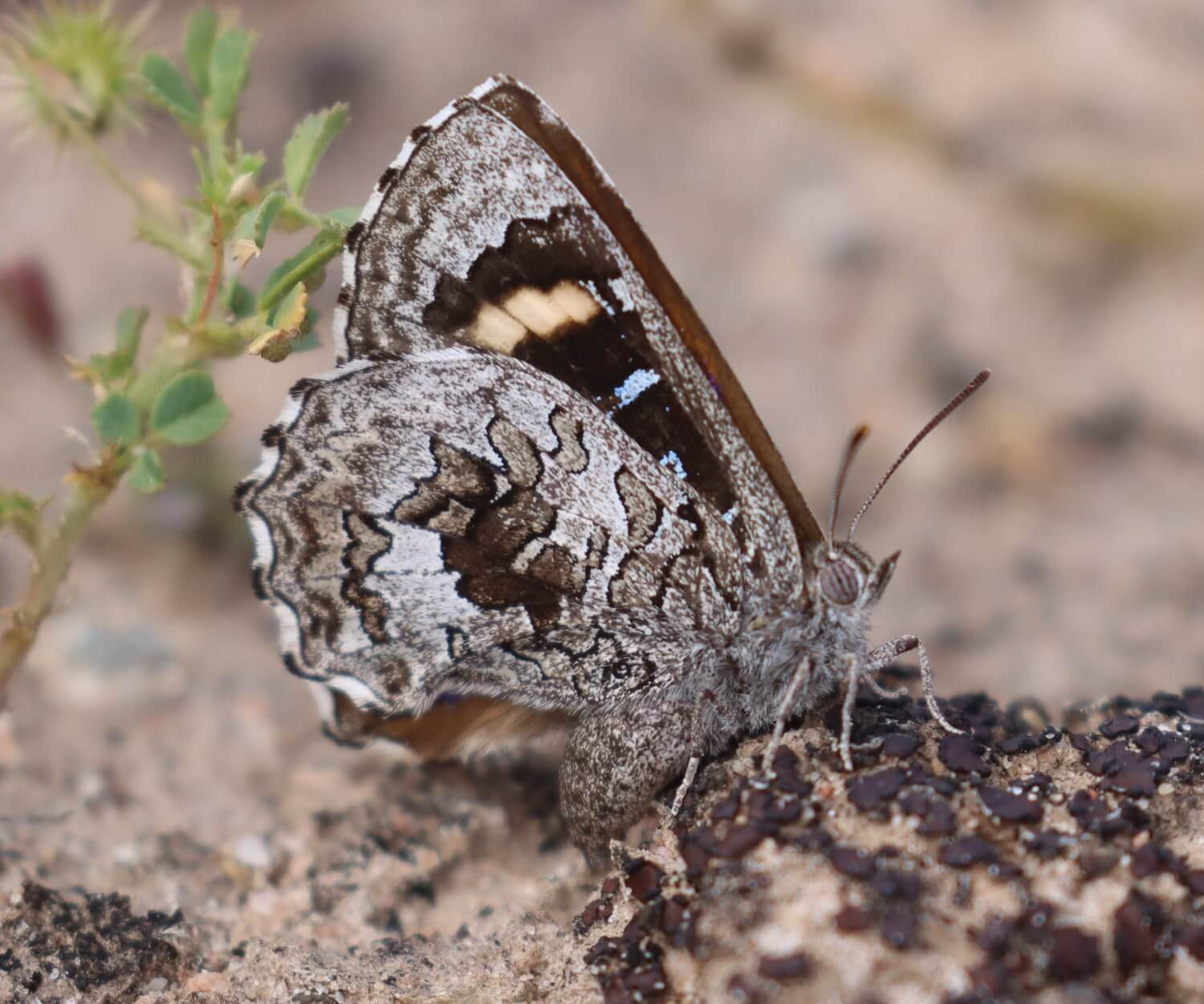At a glance
Raakajlim is home to the largest known population of the rare Mallee Bronze Azure butterfly. There are only three decent populations of this bizarre butterfly surviving in Victoria and South Australia.
The butterfly eats Sugar Ants
This butterfly is weird and a little diabolical. Neither the butterfly nor its caterpillar has a food plant. Instead, it is completely reliant on a host Sugar Ant to look after the caterpillars. Here’s what we think is happening:
The butterfly lays its eggs at the entrance to a huge Sugar Ant colony (these colonies extend for hundreds of metres). When the caterpillars hatch they emit a chemical (pheromone). It must smell pretty good to the ants because they are tricked into taking the caterpillar into their nest. Perhaps they think it is a queen ant that needs to be looked after. But the caterpillar is secretly eating the ant babies! It spends all its time underground, predating on its host ant. In spring it emerges above ground as a beautiful butterfly.
The host Sugar Ant and butterfly eggs
We don’t know much about the ant-butterfly relationship
To look after this special butterfly we need to look after the host Sugar Ant (Camponotus terebrans). But we don’t know much about the ant or its habitat requirements. And we don’t really know what’s going on underground in the ant nest. We’ve never managed to observe the caterpillar and ant interaction. I’m trying to establish an ant colony in my lounge room so perhaps one day I can see a caterpillar eat an ant larva. That would be cool (and of course, scientifically important).
For now, I’ll just watch this David Attenborough masterpiece about the Large Blue (Phengaris arion) butterfly, living in the nest of the Red Ant Myrmica sabuleti (and eating the ant babies!). As an aside, the Large Blue became extinct in Britain in 1979, but it was successfully reintroduced from Europe. So don’t let anyone tell you these ant butterflies are too complicated for conservation!
The Mallee Bronze Azure butterfly is a threatened species and has been impacted by recent flooding
The butterfly is listed as “endangered” under Victorian legislation (FFG Act). In 2021, this butterfly was ranked as #7 on the list of 26 Australian butterflies most likely to go extinct in the next 20 years. Climate change & severe weather was listed as one of the four key threats to the species. Then, in December 2022, the Murray River flood spilled out onto areas of the floodplain not inundated for 50 years. We estimate that 80% of the known Victorian breeding sites for the butterfly were wiped out. The flood also impacted one of the two South Australian populations.
In response to this decline, we led a nomination for the species to be listed under the federal Environment Protection and Biodiversity Conservation Act 1999. In September 2025, the Threatened Species Scientific Committee confirmed the nomination had been accepted and the butterfly has been prioritised for assessment.
What’s it called again?
The butterfly's official, scientific name is Ogyris subterrestris. It has a couple of common names. In Victoria, it is often called the Mildura Ogyris. This is a bit silly because it doesn’t just occur in Mildura. It’s generally called the Mallee Bronze Azure butterfly.



